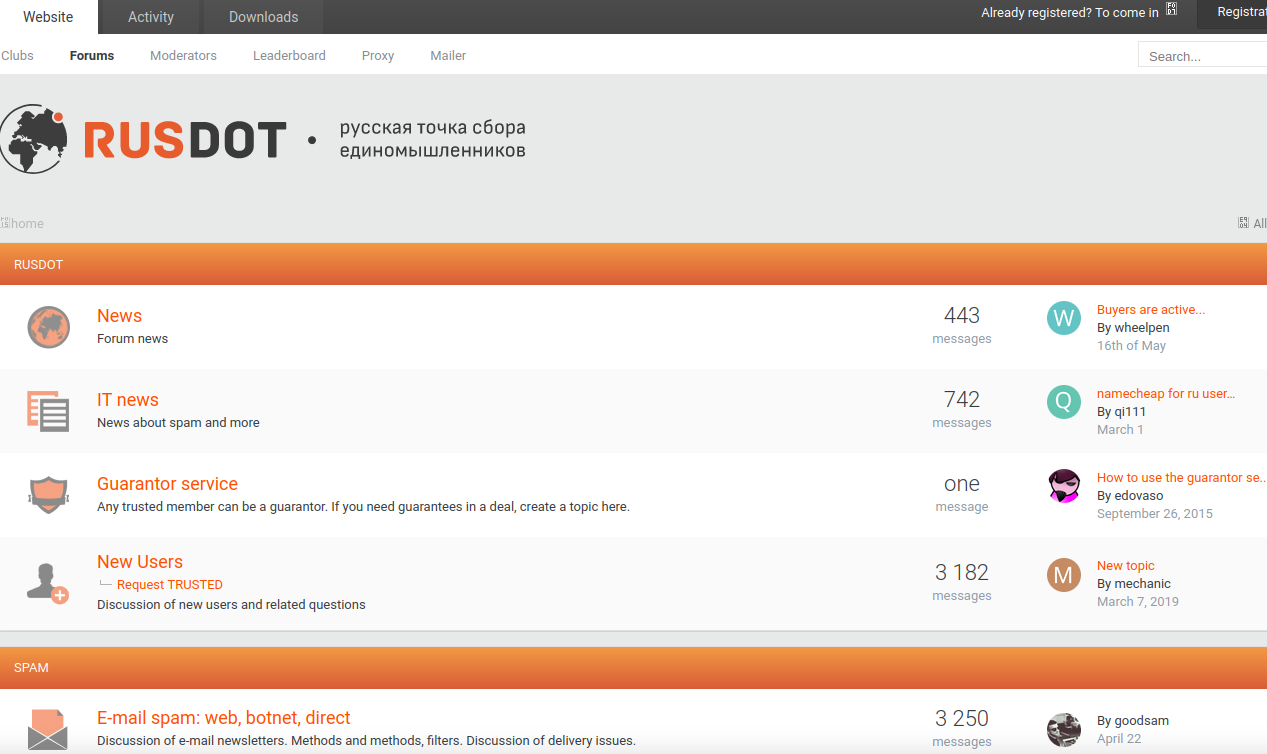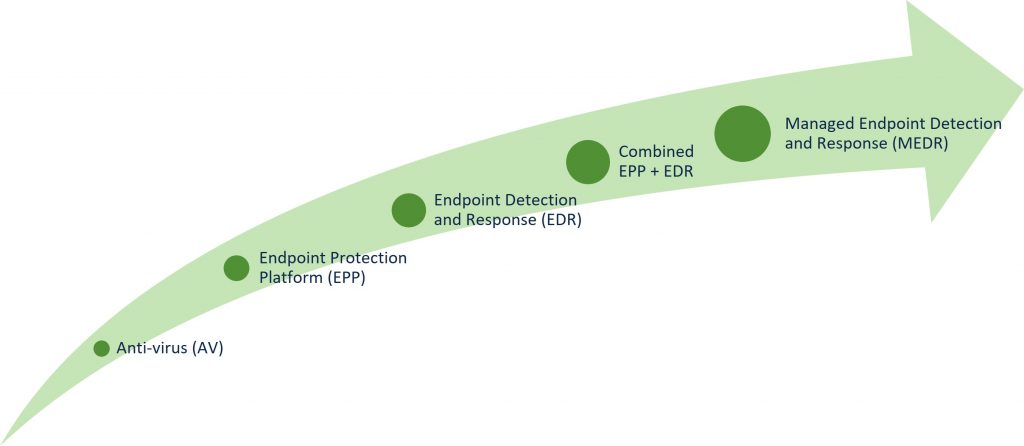



Wow, what a week! Of course there's lots of cyber / tech stuff in this week's update, but it was really only the embedded tweet below on my mind so I'm going to leave you with this then come to you from somewhere much more exotic than usual (and I reckon that's a pretty high bar for me!) next week 😎
Absolutely over the moon to formally make @Charlotte_Hunt_ a part of our family ❤️ 💍 pic.twitter.com/XfahXElboC
— Troy Hunt (@troyhunt) September 21, 2022

A 36-year-old Russian man recently identified by KrebsOnSecurity as the likely proprietor of the massive RSOCKS botnet has been arrested in Bulgaria at the request of U.S. authorities. At a court hearing in Bulgaria this month, the accused hacker requested and was granted extradition to the United States, reportedly telling the judge, “America is looking for me because I have enormous information and they need it.”

A copy of the passport for Denis Kloster, as posted to his Vkontakte page in 2019.
On June 22, KrebsOnSecurity published Meet the Administrators of the RSOCKS Proxy Botnet, which identified Denis Kloster, a.k.a. Denis Emelyantsev, as the apparent owner of RSOCKS, a collection of millions of hacked devices that were sold as “proxies” to cybercriminals looking for ways to route their malicious traffic through someone else’s computer.
A native of Omsk, Russia, Kloster came into focus after KrebsOnSecurity followed clues from the RSOCKS botnet master’s identity on the cybercrime forums to Kloster’s personal blog, which featured musings on the challenges of running a company that sells “security and anonymity services to customers around the world.” Kloster’s blog even included a group photo of RSOCKS employees.
“Thanks to you, we are now developing in the field of information security and anonymity!,” Kloster’s blog enthused. “We make products that are used by thousands of people around the world, and this is very cool! And this is just the beginning!!! We don’t just work together and we’re not just friends, we’re Family.”
The Bulgarian news outlet 24Chasa.bg reports that Kloster was arrested in June at a co-working space in the southwestern ski resort town of Bansko, and that the accused asked to be handed over to the American authorities.
“I have hired a lawyer there and I want you to send me as quickly as possible to clear these baseless charges,” Kloster reportedly told the Bulgarian court this week. “I am not a criminal and I will prove it in an American court.”
Launched in 2013, RSOCKS was shut down in June 2022 as part of an international investigation into the cybercrime service. According to the Justice Department, the RSOCKS botnet initially targeted Internet of Things (IoT) devices, including industrial control systems, time clocks, routers, audio/video streaming devices, and smart garage door openers; later in its existence, the RSOCKS botnet expanded into compromising additional types of devices, including Android devices and conventional computers, the DOJ said.
The Justice Department’s June 2022 statement about that takedown cited a search warrant from the U.S. Attorney’s Office for the Southern District of California, which also was named by Bulgarian news outlets this month as the source of Kloster’s arrest warrant.
When asked about the existence of an arrest warrant or criminal charges against Kloster, a spokesperson for the Southern District said, “no comment.”
Update, Sept. 24, 9:00 a.m. ET: Kloster was named in a 2019 indictment (PDF) unsealed Sept. 23 by the Southern District court.

The employees who kept things running for RSOCKS, circa 2016. Notice that nobody seems to be wearing shoes.
24Chasa said the defendant’s surname is Emelyantsev and that he only recently adopted the last name Kloster, which is his mother’s maiden name.
As KrebsOnSecurity reported in June, Kloster also appears to be a major player in the Russian email spam industry. In several private exchanges on cybercrime forums, the RSOCKS administrator claimed ownership of the RUSdot spam forum. RUSdot is the successor forum to Spamdot, a far more secretive and restricted forum where most of the world’s top spammers, virus writers and cybercriminals collaborated for years before the community’s implosion in 2010.
Email spam — and in particular malicious email sent via compromised computers — is still one of the biggest sources of malware infections that lead to data breaches and ransomware attacks. So it stands to reason that as administrator of Russia’s most well-known forum for spammers, the defendant in this case probably knows quite a bit about other top players in the botnet spam and malware community.

A Google-translated version of the Rusdot spam forum.
Despite maintaining his innocence, Kloster reportedly told the Bulgarian judge that he could be useful to American investigators.
“America is looking for me because I have enormous information and they need it,” Kloster told the court, according to 24Chasa. “That’s why they want me.”
The Bulgarian court agreed, and granted his extradition. Kloster’s fiancee also attended the extradition hearing, and reportedly wept in the hall outside the entire time.
Kloster turned 36 while awaiting his extradition hearing, and may soon be facing charges that carry punishments of up to 20 years in prison.



The online world provides children with previously unimagined opportunities to learn and socialize, but it also opens them up to a range of hazards. How can you steer kids toward safe internet habits?
The post 5 tips to help children navigate the internet safely appeared first on WeLiveSecurity



In the first part of this blog series on Unscrambling Cybersecurity Acronyms, we provided a high-level overview of the different threat detection and response solutions and went over how to find the right solution for your organization. In this blog, we’ll do a deeper dive on two of these solutions – Endpoint Detection and Response (EDR) and Managed Endpoint Detection and Response (MEDR). However, first let’s take a look back at the history of endpoint security solutions and understand how we got EDR and MEDR security solutions.
The very first endpoint security solutions started out as anti-virus solutions (AV) with basic security functionality that relied heavily on signature-based detection. These solutions were effective against known threats where a signature was created, but ineffective against unknown threats such as new and emerging attacks. That meant that organizations struggled to stay ahead of attackers, who were continuously evolving their techniques to evade detection with new types of malware.
To address this problem, AV vendors added detection technologies such as heuristics, reputational analysis, behavioral protection, and even machine learning to their solutions, which became known as Endpoint Protection Platforms (EPP). These unified solutions were effective against both known and unknown threats and frequently used multiple approaches to prevent malware and other attacks from infecting endpoints.
As cyberattacks grew increasingly sophisticated though, many in the cybersecurity industry recognized that protection against threats wasn’t enough. Effective endpoint security had to include detection and response capabilities to quickly investigate and remediate the inevitable security breach. This led to the creation of EDR security solutions, which focused on post-breach efforts to contain and clean up attacks on compromised endpoints.
Today, most endpoint security vendors combine EPP and EDR solutions into a single, converged solution that provides holistic defense to customers with protection, detection, and response capabilities. Many vendors are also offering EDR as a managed service (also known as MEDR) to customers who need help in securing their endpoints or who don’t have the resources to configure and manage their own EDR solution. Now that we’ve gone over how endpoint security evolved into EDR and MEDR security solutions, let’s cover EDR and MEDR in more depth.

EDR solutions continuously monitor your endpoints for threats, alert you in case suspicious activity is detected, and allow you to investigate, respond to and contain potential attacks. Moreover, many EDR security solutions provide threat hunting functionality to help you proactively spot threats in your environment. They’re often coupled with or part of a broader endpoint security solution that also includes prevention capabilities via an EPP solution to protect against the initial incursion.
As a result, EDR security solutions enable you to protect your organization from sophisticated attacks by rapidly detecting, containing, and remediating threats on your endpoints before they gain a foothold in your environment. They give you deep visibility into your endpoints while effectively identifying both known and unknown threats. Furthermore, you can quickly contain attacks that get through your defenses with automated response capabilities and hunt for hidden threats that are difficult to detect.
While EDR provides several benefits to customers, it has some drawbacks. Chief among them is that EDR security solutions are focused on monitoring endpoints only versus monitoring a broader environment. This means that EDR solutions don’t detect threats targeting other parts of your environment such as your network, email, or cloud infrastructure. In addition, not every organization has the security staff, budget, and/or skills to deploy and run an EDR solution. This is where MEDR solutions come into play.
Managed EDR or MEDR solutions are EDR capabilities delivered as a managed service to customers by third-parties such as cybersecurity vendors or Managed Service Providers (MSPs). This includes key EDR functionality such as monitoring endpoints, detecting advanced threats, rapidly containing threats, and responding to attacks. These third-parties usually have a team of Security Operations Center (SOC) specialists who monitor, detect, and respond to threats across your endpoints around the clock via a ‘follow the sun’ approach to monitoring.
MEDR security solutions allow you to offload the work of securing your endpoints to a team of security professionals. Many organizations need to defend their endpoints from advanced threats but don’t necessarily have the desire, resources, or expertise to manage an EDR solution. In addition, a team of dedicated SOC experts with advanced security tools can typically detect and respond to threats faster than in-house security teams, all while investigating every incident and prioritizing the most critical threats. This enables you to focus on your core business while getting always-on security operations.
Similar to EDR though, one downside to MEDR security solutions is that they defend only your endpoints from advanced threats and don’t monitor other parts of your infrastructure. Moreover, while many organizations want to deploy EDR as a managed service, not everyone desires this. For example, larger and/or more risk-averse organizations who are looking to invest heavily in cybersecurity are typically satisfied with running their own EDR solution. Now, let’s discuss how to choose the right endpoint security solution when trying to defend your endpoints from threats.
As I mentioned in my previous blog, there isn’t a single correct solution for every organization. This logic applies to EDR and MEDR security solutions as well since each solution works well for different types of organizations, depending on their needs, resources, motivations, and more. Nevertheless, one major factor to consider is if you have or are willing to build out a SOC for your organization. This is important because organizations that don’t have or aren’t willing to develop a SOC usually gravitate towards MEDR solutions, which don’t require significant investments in cybersecurity.
Another factor to keep in mind is your security expertise. Even if you’re have or are willing to build a SOC, you may not have the right cybersecurity talent and skills within your organization. While you can always build out your security team, you may want to evaluate an MEDR solution because a lack of expertise makes it difficult to effectively manage an EDR solution. Finally, a common misconception is that you must choose between an EDR and a MEDR solution and that you cannot run both solutions. In reality, many organizations end up using both EDR and MEDR since MEDR solutions often complement EDR deployments.
I hope this information and key factors help you better understand EDR and MEDR solutions while acting as a guide to selecting the best endpoint security solution for your organization. For more details on the different cybersecurity acronyms and how to identify the right solution for your needs, stay tuned for the next blog in this series – Unscrambling Cybersecurity Acronyms: The ABCs of MDR and XDR Security. In the meantime, learn how Cisco Secure Endpoint stops threats with a comprehensive endpoint security solution that includes both advanced EDR and MEDR capabilities powered by an integrated security platform!
We’d love to hear what you think. Ask a Question, Comment Below, and Stay Connected with Cisco Secure on social!
Cisco Secure Social Channels